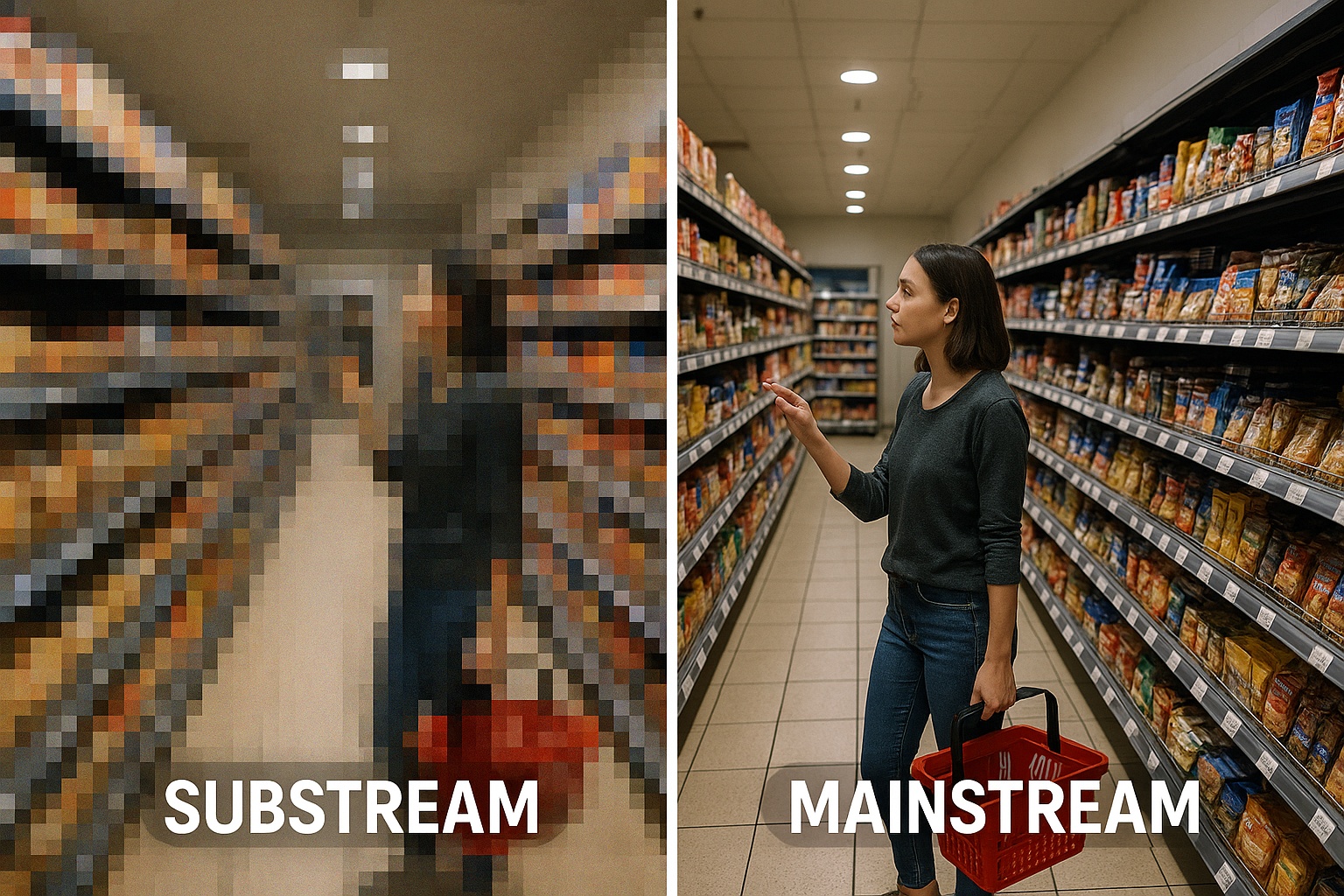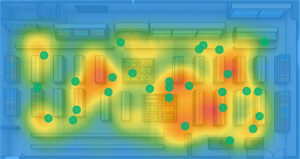Understanding the Two Approaches: Mainstream and Substream
In-store video analysis relies on data streams captured by cameras installed in the retail environment. These streams can be processed using two approaches: *mainstream* and *substream*. The mainstream is the primary video stream, typically in high definition, which provides an optimal level of detail for advanced analytics. The substream, on the other hand, is a lighter, secondary stream, often compressed to reduce processing load and limit bandwidth usage.
While the substream may seem appealing at first glance due to its low technical requirements, it quickly shows its limitations in demanding use cases, especially for the precise detection of suspicious gestures or behaviors. Subtle details—movements, interactions—are often lost in a low-resolution stream. This significantly undermines the accuracy of AI models that require rich, well-defined data to deliver reliable results.
In comparison, mainstream analysis relies on high-fidelity images. This allows for a more detailed interpretation of gestures and postures, which is essential for retail stores, where the risks of shrinkage are high and often linked to subtle behaviors.
The Operational Advantages of Mainstream Analysis 📈
One of the major advantages of mainstream processing is its ability to feed artificial intelligence algorithms with high-quality, precise, and consistent data. This translates into more reliable and actionable results for security teams and store managers. The detection of suspicious gestures—concealing objects, erratic movements, abnormal interactions—becomes more relevant, reducing false positives and improving on-the-ground response time.
Unlike the substream, which can produce blurry, pixelated, or compressed images, the mainstream ensures a clear visual foundation for the AI to build upon. It also allows for better event traceability, which is useful for internal investigations or post-incident analysis.
For decision-makers, this means a tangible reduction in losses, an improved customer experience—as interventions are better targeted and less intrusive—and enhanced efficiency of surveillance systems, without needing to increase the number of cameras or modify the existing infrastructure.
Why the Substream Falls Short for Next-Generation AI
As AI rapidly advances and becomes capable of recognizing complex gestures and human interactions, relying on the substream becomes a major technical limitation. Its low bitrate compromises the quality of the collected data, making certain analyses impossible or inaccurate.
Furthermore, in a context where threats are becoming more subtle, it is no longer enough to identify obvious behaviors. It is often the subtle gestures and unusual movements that make it possible to detect a real risk. These nuances disappear in substream feeds, thereby reducing the foresight and responsiveness of security teams.
Choosing a substream-based solution, therefore, means risking an investment with limited returns. Conversely, the mainstream becomes a strategic foundation for stores that are betting on technology to improve both their security and their business performance.
Oxania, Your Technology Partner for High-Quality Video Analysis 🚀
At Oxania , we have made the clear choice to leverage the full potential of the mainstream feed. Our artificial intelligence video analysis solutions are designed to operate on high-definition streams, ensuring maximum reliability in detecting suspicious gestures and a seamless integration with video surveillance systems. Thanks to this approach, our clients benefit from a better return on investment and an enhanced level of security .
By choosing mainstream analysis, you provide your teams with more precise tools and more relevant alerts. It is a powerful lever for combining operational efficiency with technological innovation.
Adopting mainstream analysis means entering a new era of intelligent surveillance, where data quality makes all the difference.





